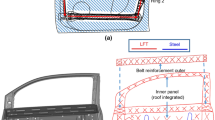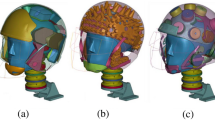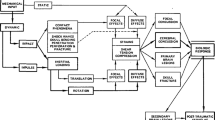Abstract
Iliac wing fractures due to lap belt loading have been identified in laboratory tests for almost 50 years and an analysis of recent data suggests these injuries are also occurring in the field. With the introduction of highly autonomous vehicles on the horizon, vehicle manufacturers are exploring open cabin concepts that permit reclined postures and separation of the occupant from the knee bolster and instrument panel. This will result in greater reliance on the lap belt and lap belt/pelvis loading to restrain occupants. No injury criteria exist for iliac wing fractures resulting from lap belt loading like that seen in frontal crash conditions. This study tested the tolerance of isolated iliac wings in a controlled lap belt-like loading environment while incorporating the effect of loading angle after analyzing lap belt loading experiments from a previous study. Twenty-two iliac wings were tested; nineteen of them sustained fracture (exact), but the loading input was insufficient to cause fracture in the other three (right censored). The fracture tolerance of the tested specimens ranged widely (1463–8895 N) and averaged 4091 N (SD 2381 N). Injury risk functions were created by fitting Weibull survival models to data that integrated censored and exact failure observations.



Similar content being viewed by others
References
Jorlöv S, Bohman K, Larsson A. Seating positions and activities in highly automated cars – a qualitative study of future automated driving scenarios. Proceedings of IRCOBI Conference, 2017, Antwerp, Belgium.
Koppel, S., J. Octavio, et al. Seating configuration and position preferences in fully automated vehicles. Traffic Injury Prev. 20:103–109, 2019.
Östling M, Larsson A. Occupant activities and sitting positions in automated vehicles in China and Sweden. 26th International Technical Conference on the Enhanced Safety of Vehicles (ESV), 2019, Eindhoven, Netherlands.
The U.S. Department of Transportation's: Automated driving systems 2.0 a vision for safety, September 2017. https://www.nhtsa.gov/sites/nhtsa.dot.gov/files/documents/13069a-ads2.0_090617_v9a_tag.pdf
Richardson R, Jayathirtha M et al. Pelvis kinematics and injuries of reclined occupants in frontal impacts. Proceedings of IRCOBI Conference, 2020, Munich, Germany.
Luet C, Trosseille X et al. Kinematics and dynamics of the pelvis in the process of submarining using PMHS sled tests. 56th Stapp Car Crash Conference, 2012, Savannah, GA.
Uriot J, Potier P et al. (2015) Reference PMHS sled tests to assess submarining. 59th Stapp Car Crash Conference, 2015, New Orleans, LA.
Trosseille X, Petit P et al. Reference PMHS sled tests to assess submarining of the small female. 62nd Stapp Car Crash Conference, 2018, San Diego, CA.
Fayon A, Tarriere C, Wasfish G, Got C, Patel A. Thorax of 3-point belt wearers during a crash (experiments with cadavers). 19th Stapp Car Crash Conference, 1975, San Diego, CA.
Schmidt G, Kallieris D, Barz J, Mattern R. Results of 49 cadaver tests simulating frontal collision of front seat passengers. 18th Stapp Car Crash Conference, 1974, Ann Arbor, MI.
Moreau D, Donlon J.P. et al. A methodology to replicate lap belt loading conditions from a sled impact test in a non-impact dynamic environment on whole-body postmortem human subjects. Proceedings of IRCOBI Conference, 2021, Online.
Kent R, Funk J. data censoring and parametric distribution assignment in the development of injury risk functions from biomechanical data. SAE Technical Paper, 2004-01-0317. 2004.
McMurry, T., and G. Poplin. Statistical considerations in the development of injury risk functions. Traffic Injury Prev. 16:618–626, 2015.
Petitjean A, Trosseille X. Statistical simulations to evaluate the methods of the construction of injury risk curves. 55th Stapp Car Crash Conference, 2011, Dearborn, MI.
Hurvich, C. M., and C. L. Tsai. Regression and time series model selection in small samples. Biometrika. 76(2):297–307, 1989.
Therneau T. A package for survival analysis in R. R package version 3.2-13, https://CRAN.R-project.org/package=survival.
Acknowledgments
We would like to thank Autoliv Research for sponsoring the work presented in this study, and our tissue donors for their generosity, which made this study possible.
Author information
Authors and Affiliations
Corresponding author
Ethics declarations
Conflict of interest
The authors do not have any conflict of interest to disclose.
Additional information
Associate Editor Joel Stitzel oversaw the review of this article.
Publisher's Note
Springer Nature remains neutral with regard to jurisdictional claims in published maps and institutional affiliations.
Supplementary Information
Below is the link to the electronic supplementary material.
Rights and permissions
Springer Nature or its licensor (e.g. a society or other partner) holds exclusive rights to this article under a publishing agreement with the author(s) or other rightsholder(s); author self-archiving of the accepted manuscript version of this article is solely governed by the terms of such publishing agreement and applicable law.
About this article
Cite this article
Moreau, D., Chernyavskiy, P., Sochor, S. et al. Development of an Injury Risk Function for the Anterior Pelvis Under Frontal Lap Belt Loading Conditions. Ann Biomed Eng 51, 1942–1949 (2023). https://doi.org/10.1007/s10439-023-03244-8
Received:
Accepted:
Published:
Issue Date:
DOI: https://doi.org/10.1007/s10439-023-03244-8




